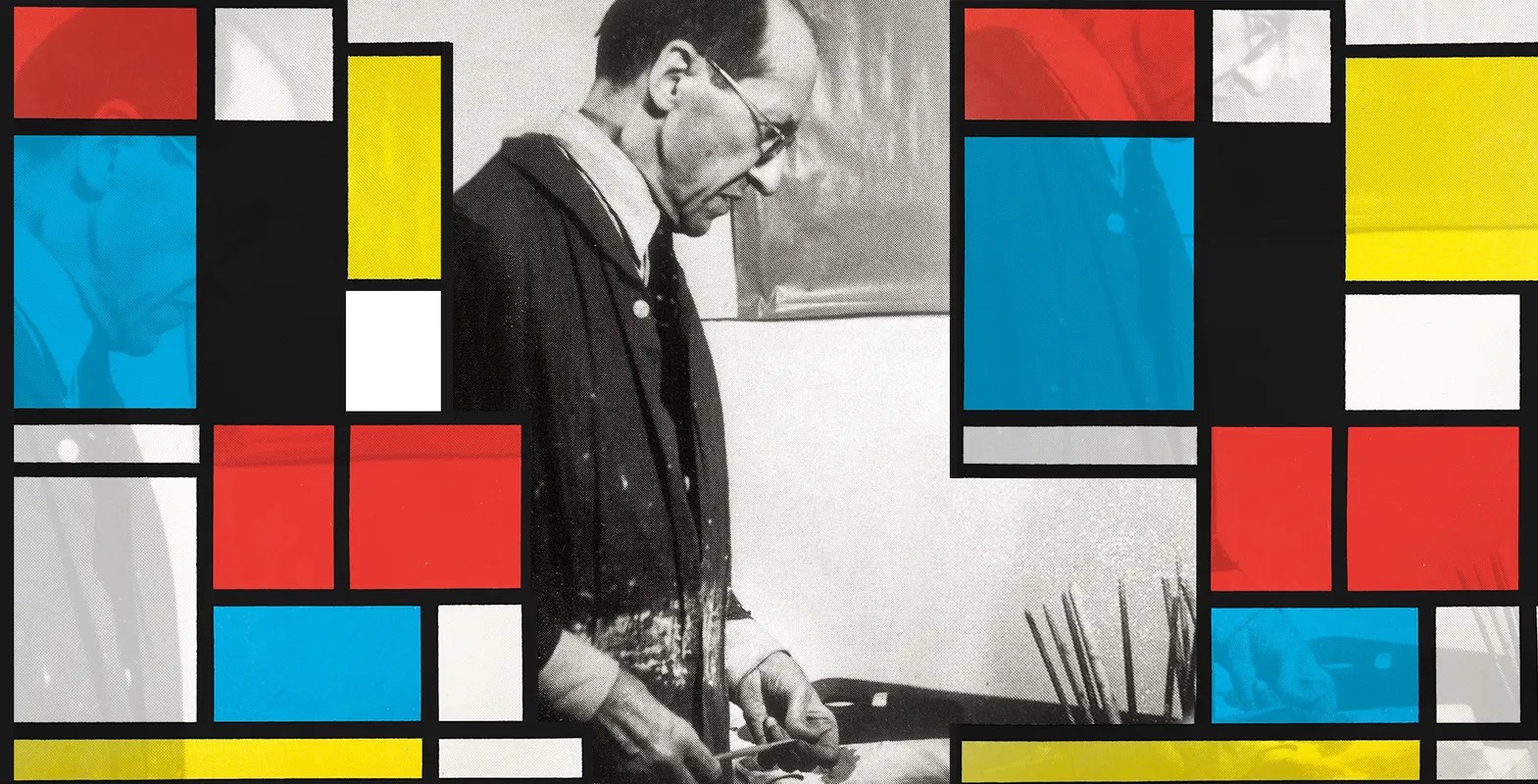He was a theosophist: Who is Piet Mondrian?
Dutch painter Piet Mondrian became one of the pioneers of abstract art in Europe with the neo-plasticism theory he developed. He is known for being one of the pioneers of 20th-century abstract art.

Piet Mondrian was born on March 7, 1872 in Amersfoort. His real name is Pieter Cornelis Mondriaan. He received his art education at the Amsterdam Academy between 1892 and 1894. Around 1903, he became interested in theosophy (the philosophical approach that envisions a direct relationship between the individual and God and angels). He went to Paris in 1911. Here he first became interested in symbolist and then cubist art. He returned to his country in 1914. He developed the theory of neo-plasticism in 1916-1917. He founded the De Stijl group with van Doesburg and Anthony van der Leck (1876-1958). He went to Paris again in 1919, but his contributions to the group continued with the articles he sent to De Stijl magazine.
His essays were first published in Paris in 1920 under the name Le neo-plasticisme. The German translation of the same work appeared in Bauhaus publications in 1924 under the name Nene Gestaltung. In those years, Mondrian left De Stijl in reaction to van Doesburg's development of the theory of elementarism. He went to London in 1938. When his workshop was bombed during World War II, he went to the USA and settled in New York in 1940.
Pieter Cornelis Mondriaan (7 March 1872 – 1 February 1944), was a Dutch painter and art theoretician who is regarded as one of the greatest artists of the 20th century. He is known for being one of the pioneers of 20th-century abstract art, as he changed his artistic direction from figurative painting to an increasingly abstract style, until he reached a point where his artistic vocabulary was reduced to simple geometric elements.
Mondrian, who had previously painted landscapes, began to attach importance to the line after going to Paris, under the influence of the Dutch painter Jan Toorop, and produced symbolic works. Later, under the influence of his meeting with Cezanne and Cubism, which was dominant in Paris at that time, he turned to abstraction. His transition from schematic figurative to straight lines and small arc forms can be observed in the tree paintings he made between 1909 and 1911. During this period, he also made paintings using broken lines and oval shapes. In this development, he moved away from the naturalistic connotations of Cubism and began to concentrate on quadrilaterals in order to reach a purely geometric abstract. With these arrangements, which he made using only basic colors on a white background, he began to develop the theory of neo-plasticism, which is the basic principle of De Stijl. However, considering that the white background evoked a space, in order to completely eliminate the third dimension from the painting, starting from the 1920s, he divided the canvas with horizontal and vertical black lines and painted the rectangles between them with yellow, red, and blue.
Mondrian developed his theory of neo-plasticism based on mystical and theo-sophistic thought. His aim was to express the universal principles of balance and harmony that lie at the basis of life but cannot find expression in nature. It was to reduce natural forms to the unchanging elements of horizontal and vertical relations, and natural colors to basic colors. Thus, personal elements could be transformed into universal elements. In the 1930s, he increased the number of horizontal and vertical lines he used, transformed them into a lattice pattern, and began to give some city names to his paintings. In the 1940s, he gave up using the color black and achieved this lattice pattern by arranging small-sized, colored rectangles one after another, thus assigning the task of the line to color.
Mondrian's works and theoretical studies had an impact on the field of architecture as well as painting.
The artist died in New York on February 1, 1944.
